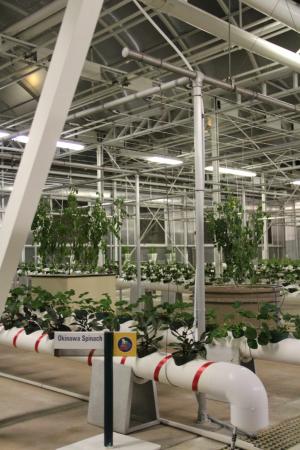- Next-generation sequencing strategies for characterizing the turkey genome. It never ends, does it. Meanwhile, we patiently await our jetpacks.
- Community-Based Management of Animal Genetic Resources (AnGR): Constraints and Prospects of AnGR Conservation in the Tropics. Best thing to do is improve the local breeds through village-level schemes. In Nigeria, that is.
- Comparison of seed viability among 42 species stored in a genebank. 80% loss in melon seed viability over 10 years sounds a bit high to me.
- Market Participation and Agro-Biodiversity Loss: The Case of Native Chili Varieties in the Amazon Rainforest of Peru. Selling to local retailers good for diversity, selling to wholesalers not so much.
- Stem and leaf rust resistance in wild relatives of wheat with D genome (Aegilops spp.). They all have it.
- Assessing rice and wheat germplasm collections using similarity groups. You can go quite far in identifying possible duplicates just with. passport data.
- Genetic Distinctiveness of the Herdwick Sheep Breed and Two Other Locally Adapted Hill Breeds of the UK. Close to each other geographically and ecologically, but quite genetically distinct. No word on whether village-level improvement necessary for their continued existence.
- Managing Potato Biodiversity to Cope with Frost Risk in the High Andes: A Modeling Perspective. Fancy maths confirms better to grow mixtures. Andean farmers nonplussed.
- Sweet potato (Ipomoea batatas L.) leaves as nutritional and functional foods. But they taste like shit. Just kidding, they’re good and good for you.
Eat up all your Okinawa spinach
Speaking of Amanda, she also recently went on the Living with the Land boat ride at the Epcot theme park at Walt Disney World in Florida.
A relaxing 13-minute boat ride takes you on an informative journey through a tropical rain forest, an African desert complete with sandstorm, and the windswept plains of a small, turn-of-the-century family farm. Guests experience the struggles of the past and plans for farming in the future including Hydroponics, Aeroponics and Aquaculture. It’s not just about fruits and veggies, fish farms are on display. Since The Land is a Disney restaurant supplier, You could very well be seeing your entree. Wonder where those Mickey shaped cucumbers in your salad came from? This is where they’re grown. The educational content on this ride is geared more towards adults, but younger guests will love the boat ride and spotting the different fruits and vegetables.

Very educational, I’m sure. Anyway, this photo of hers featuring Okinawa Spinach caught my eye, even more than the Mickey shaped cucumbers, because I’d never heard of the stuff. Turns out to be Gynura bicolor, and to have really few accessions in the world’s genebanks. I wonder why Disney World picked on it in preference to any number of better known Asian vegetables. And whether they sell seeds in the gift shop. But it’s certainly one way to stimulate interest in a neglected species.
Nibbles: Plant Guardians, Peruvian Solanum, Sunflower genomics, California drought, Brazil drought, Sri Lankan tea, Minnesota wine, Seed of Hope, Sugarcane engineering, King Cotton, Rubber boom
- Do you want to be a Plant Guardian?
- Some people are already getting busy guarding Solanum in Peru.
- The sunflower family gets a molecular makeover.
- What the California drought means for food.
- And the one in Brazil for coffee.
- And tea in Sri Lanka is also in trouble, though for once drought is not to blame.
- Minnesota has a wine industry thanks to wild relatives. But I won’t hold that against them.
- In today’s Seeds of X story, X=hope and the place is Aceh.
- If sugarcane was a cold-tolerant oil-producing crop, would it still be sugarcane?
- Cotton has a lot to answer for. Or rather, the people who grew it do. Or did. Oh crap.
- Rubber too. Though not as much. I guess. Oh crap.
Nibbles: CGIAR priorities, Drought tolerant rice, Agroecology bibliography, Amaranthus seed production video, Ethiopian genebank, Yemeni genebank
- UN Special Rapporteur on food thinks “questions of the 60s are not the questions of today.” Does he think the CGIAR is answering the questions of the 60s? One suspects so, but surely there are points of agreement, e.g. nutrition, food systems, natural resources management…
- Farmers would be willing to pay quite a premium for drought tolerant (DT) rice hybrids, but for DT varieties not so much. That’s an opportunity for public-private partnerships. Or is that a 60s answer to a 60s question?
- Mr de Schutter probably knows all about this bibliography of agroecology in action. Which all seems so much more 60s than hybrid rice somehow.
- How 60s is it to want to produce decent amaranthus seed? It’s totally unfair, but I can’t resist linking to this now.
- Ethiopian genebank, set up in response to the genetic erosion of the 60s, gets nice, long writeup in The Guardian by way of introduction to a bare-bones couple of final paragraphs on some G8 poverty reduction plan. Nice video though.
- There was no Facebook in the 60s for genebanks to strut their stuff on.
Nibbles: New potatoes, Wild species, Native maize, Conservation course, Indigenous fishery, Yield trends
- Wild relative rescues potatoes. Which wild relative? Well for that you’ll have to read the paper. The FAQ on that. Or if you want an alternative. More the better, I guess. And just to remember what makes it all possible: diversity in fields and genebanks.
- Wild species not just useful to food security as sources of genes, of course. And more.
- Indigenous peoples save corn.
- Maybe some of them would be interested in this MSc at Bangor.
- Indigenous peoples can catch — and save? — fish after all.
- So is there stagnation in yield increases or what? Lobell reviews book that says maybe not.